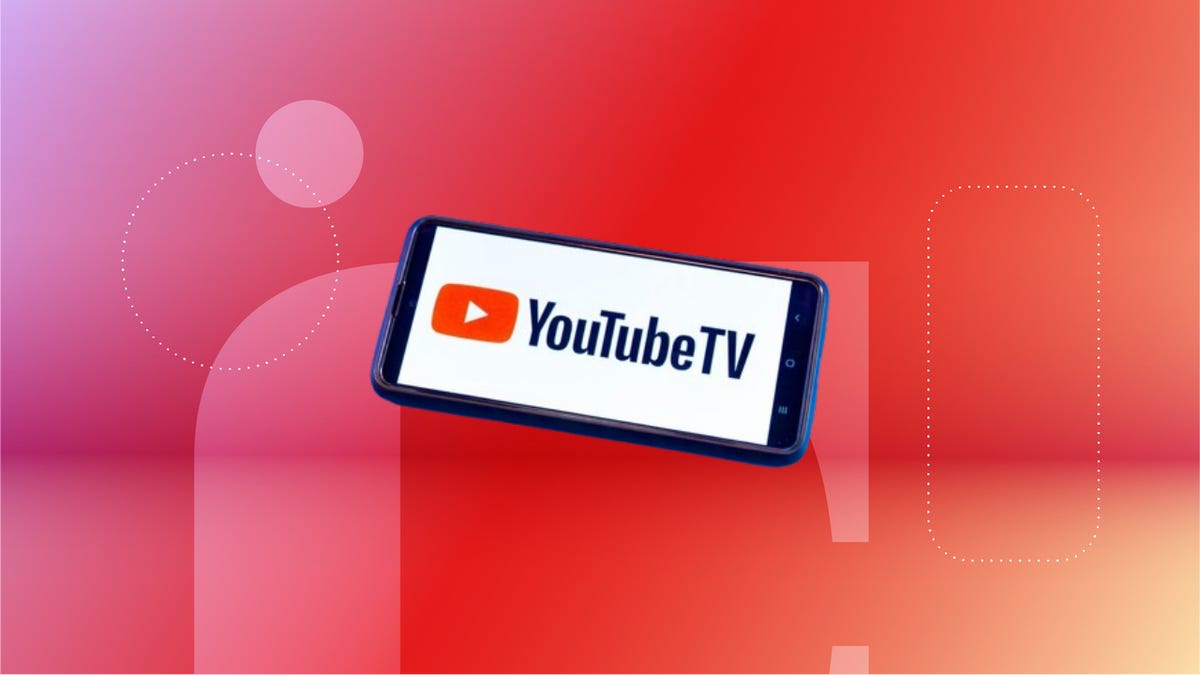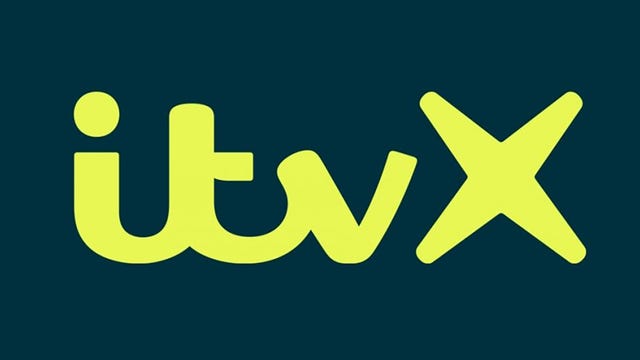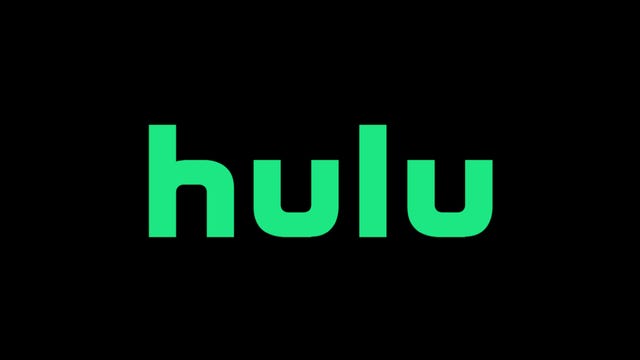Technologies
Watch Summer ‘Love Island’ 2023: Stream Season 10 Anywhere for Free
A new group of hopeful singletons have jetted off to holiday island of Mallorca.

The quest to couple up and capture the hearts of the TV-viewing public resumes, with an all new season of Love Island about to hit TV screens around the globe.
This latest summer installment of the hot reality show will bring together a new batch of hopefuls to an idyllic Balearic mansion in Mallorca, Spain, with model-turned-TV presenter Maya Jama once again serving as host.
Among the singletons heading into the villa are semi-pro soccer player Tyrique, Irish real estate agent Catherine and Beautician Ruhee.
Don’t miss a moment of the steamy drama by following our guide to watching Summer Love Island 2023 from anywhere in the world.

When does Summer Love Island 2023 start?
It depends on where you live.
In the UK, season 10 of Love Island (UK) starts on Monday, June 5. New episodes are set to be broadcast every day at 9 p.m. BST on ITV2 in the UK, (That’s 1 p.m. PT and 4 p.m. ET in the US and 6 a.m. AEST the next day in Australia), with Saturday night’s episodes featuring «unseen bits» from the week’s action.
Outside the UK, it’s also available in Australia on Channel 9’s on-demand service, 9Now.
For US viewers, there’s set to be a bit of a wait, with no confirmed air date or broadcaster. However, we expect to see the season 10 episodes appear on Hulu a couple of weeks after they’ve aired in the UK.
How to watch Summer Love Island 2023 from anywhere on VPN
So what if you’re traveling outside your home country and want to enjoy the show or want an added layer of privacy for streaming? There is an option that doesn’t require searching the internet for a sketchy website: You can use a VPN, or virtual private network.
With a VPN, you’re able to virtually change your location on your phone, tablet or laptop to get access to the show. If you find yourself unable to watch locally, a VPN can come in handy. Plus, it’s a great idea for when you’re traveling and find yourself connected to a Wi-Fi network and want to add an extra layer of privacy for your devices and logins.
Most VPNs, like CNET’s Editors’ Choice, ExpressVPN, make it easy to virtually change your location. Looking for other options? Be sure to check out some of the other great VPN deals.
ExpressVPN is our current best VPN pick for people who want a reliable and safe VPN, and it works on a variety of devices. It’s normally $13 per month. But you can save 49% plus get three months of access for free — the equivalent of $6.67 per month — if you get an annual subscription.
Note that ExpressVPN offers a 30-day money-back guarantee.
Stream for free in the UK
Fans in the UK can watch every episode of Love Island season 10 for free. The show is exclusive to ITV, with episodes shown every evening on ITV2 at 9 p.m., UK time. You’ll also be able to watch the show online for free via the network’s on demand streaming service ITVX (formerly ITV Hub) from anywhere.
Stream in Australia
Channel 9’s on-demand service, 9Now, has been the place to watch Love Island (UK) in the past and that’s the case for this season, which starts on June 7 in Australia. That means Aussies will need to avoid spoilers on social media as they’ll be a couple of days behind the UK.
Watch in the US
While no US broadcaster is currently confirmed to show season 10 of Love Island in the US, the smart money is on Hulu. The service has previously shown past seasons in the States, albeit a couple of weeks behind the UK, and that’s how we’re expecting things to pan out again this time.
New Hulu subscribers can take advantage of a Hulu free trial for 30 days on its With-Ads or No-Ads plan. After the trial ends, the service will set you back $8 a month. There’s also the option of the Disney Plus bundle with Hulu thrown in from $10 a month.
Tips for streaming the Summer Love Island 2023 using a VPN
- With four variables at play — your ISP, browser, video streaming provider and VPN — experience and success may vary.
- If you don’t see your desired location as a default option for ExpressVPN, try using the «search for city or country» option.
- If you’re having trouble viewing after you’ve turned on your VPN and set it to the correct viewing area, there are two things you can try for a quick fix. First, log in to your streaming service subscription account and make sure the address registered for the account is an address in the correct viewing area. If not, you may need to change the physical address on file with your account. Second, some smart TVs — like Roku — don’t have VPN apps you can install directly on the device itself. Instead, you’ll have to install the VPN on your router or the mobile hotspot you’re using (like your phone) so that any device on its Wi-Fi network now appears in the correct viewing location.
- All of the VPN providers we recommend have helpful instructions on their main site for quickly installing the VPN on your router. In some cases with smart TV services, after you install a network’s app, you’ll be asked to verify a numeric code or click a link sent to your email address on file for your smart TV. This is where having a VPN on your router will also help, since both devices will appear to be in the correct location.
- And remember, browsers can often give away a location despite using a VPN, so be sure you’re using a privacy-first browser to log into your services. We normally recommend Brave.
Technologies
Football Fans Scrambling After ESPN, ABC, Disney Pulled From YouTube TV
Several channels were pulled from the service after the two sides failed to meet a deadline for a deal.

Like a desperate quarterback, millions of college football fans could be scrambling. Disney pulled ESPN and ABC from YouTube TV on Friday after both sides failed to meet a midnight deadline to strike a deal over content distribution.
Unless something changes, millions of fans won’t be able to watch the college football games that ESPN, ESPN2 and ABC will broadcast Friday and Saturday. That includes No. 5-ranked Georgia versus Florida — aka «The World’s Largest Outdoor Cocktail Party» — No. 9 Vanderbilt versus No. 20 Texas, No. 7 Ole Miss versus South Carolina and several other games.
Don’t miss any of our unbiased tech content and lab-based reviews. Add CNET as a preferred Google source.
ESPN, ESPN2 and ABC — all Disney properties — broadcast the most college football games by far. Their schedule is listed here. ESPN and ABC air NFL games on Monday nights and also broadcast NBA games.
A representative for Disney did not immediately respond to a request for comment.
Disney says YouTube TV is not paying enough to stream its channels. YouTube TV, owned by Google, has the most subscribers of all other internet TV providers, more than 9 million. Hulu, owned by Disney, is second with 4.3 million subscribers through its Hulu + Live TV offering. Disney and Google needed to reach an updated contractual agreement by 11:59 p.m. ET on Thursday, Oct. 30, which didn’t happen.
Football fans aren’t the only viewers left sidelined. Here are all the channels that were pulled from YouTube TV:
ABC
ESPN
ESPN2
Freeform
FX
FXX
Disney Junior
SEC Network
Nat Geo
Nat Geo Wild
Disney Channel
ESPNU
FXM
ABC News Live
ACC Network
Disney XD
Localish
ESPNews
ESPN Deportes (Spanish Plan)
Baby TV Español (Spanish Plan)
Nat Geo Mundo (Spanish Plan)
YouTube TV posted on X, «Members, when we renew our contracts with network partners, we advocate for fair pricing to offer you the best TV experience.» The service also said it would offer subscribers a $20 credit «if their content is unavailable for an extended period of time.» You can find updates on the dispute on this YouTube TV page.
«Google’s YouTube TV has chosen to deny its subscribers the content they value most by refusing to pay fair rates for our channels, including ESPN and ABC,» Disney said in a statement to CNBC.
In a memo to employees on Friday that was reported by CNBC, Disney accused YouTube TV of deleting «previously recorded shows and events from their subscribers’ libraries.»
«YouTube TV and its owner, Google, are not interested in achieving a fair deal with us,» Disney Entertainment co-chairs Dana Walden and Alan Bergman and ESPN Chairman Jimmy Pitaro said in the memo. «Instead, they want to use their power and extraordinary resources to eliminate competition and devalue the very content that helped them build their service.»
Consumers have alternatives to YouTube TV to get their favorite streaming channels, including Sling TV, Hulu + Live TV, Fubo and DirecTV Stream. CNET’s top streaming picks ar here.
Technologies
How to Redeem Every Active Borderlands 4 SHiFT Code
If you act quickly, you can use these SHiFT promo codes to snag epic loot and tons of Vault Hunter cosmetics in Borderlands 4.

The biggest looter shooter of the year, Borderlands 4, is out, and players are already taking the fight to the Timekeeper on Kairos. If you want to put the beat down on someone strong enough to control an entire planet, then you’re going to need an arsenal of powerful weapons and equipment.
Luckily, developer Gearbox Software is willing to lend a helping hand. Instead of having to farm every piece of legendary equipment in-game, you can roll the dice on some loot with Golden Keys unlocked by SHiFT promo codes.
Don’t miss any of our unbiased tech content and lab-based reviews. Add CNET as a preferred Google source.
If you’re already swimming in more loot than you know what to do with, some SHiFT codes also unlock special cosmetic looks for your favorite vault hunters. Special in-game challenges have already unlocked promo codes for Amon, Rafa and Vex vault hunter skins, with a Harlowe skin unlocking soon. Here’s how to use the latest SHiFT codes in Borderlands 4.
All active SHiFT codes for Borderlands 4
You can hunt down SHiFT codes on social media, but we’ll keep all of the active promo codes in one place for ease of access.
Below, you’ll find a chart that contains every active SHiFT code for Borderlands 4, what it unlocks and its expiration date:
Active Borderlands 4 SHiFT codes
| Reward | SHiFT code | Expiration date |
|---|---|---|
| Vex Mass Market Appeal Skin | BZ6JJ-CB6CT-WXJJW-3TT3B-56FZ5 | Jan. 1, 2031 |
| Amon Cult Classic Skin | JZ6BJ-SBR5J-WF3BK-BT3BB-TX9HB | Dec. 31, 2030 |
| Rafa Savings Savior Skin | TZXT3-XJXCB-CXBJW-BTTJT-9SK6B | Dec. 31, 2030 |
| Harlowe Maliwannabee Skin | J96JT-BCXKT-C6JJ5-JTJBB-BZTXJ | Dec. 31, 2030 |
| Break Free Cosmetics Pack | JS63J-JSCWJ-CFTBW-3TJ3J-WJS5R | Jan. 1, 2031 |
| Halloween Cosmetics Pack | 3S6BB-ZXT93-KRT3W-BT3T3-JW6TZ | Jan. 1, 2031 |
| Golden Key | J9RTT-KWCK3-CFBB5-BTBT3-FKRB6 | Nov. 1, 2025 |
| Golden Key | BHRB3-XCWCJ-WFJTK-JTJJT-FCWF9 | Nov. 1, 2025 |
| Golden Key | 3SRB3-95CC3-K6TB5-BTJTB-66ZHW | Nov. 1, 2025 |
| Golden Key | T9RJB-BFKRR-3RBTW-B33TB-KCZB9 | No expiration |
How to redeem SHiFT codes for your Borderlands 4 account
While SHiFT codes are totally free rewards for you to accumulate, you must make a SHiFT account to input any active codes in-game.
SHiFT is a service that Gearbox integrates into its biggest games, and making an account unlocks forums and exclusive beta participation. It’s also necessary to create an account to turn in any promo codes, which is what most fans care about.
Once your account is created, you can enter your SHiFT codes in two separate places. Within your SHiFT account settings, you can find a Rewards tab with a field to enter any Borderlands promo codes. Once you enter the codes, any unlocked items will be added to your account the next time you open the game.
However, an easier way to input your SHiFT codes is within Borderlands 4 itself. Within the game’s pause menu, you can access a SHiFT. Select the Rewards tab from the resulting menu, input your codes and the unlocked items will be immediately available on your save.
Where are SHiFT codes normally released?
SHiFT codes are released frequently on Gearbox and Gearbox-affiliated social media channels. For the best chance at catching every new SHiFT code that gets released, you should follow Gearbox on X and on Facebook.
Gearbox CEO Randy Pitchford also releases promos on his X account, so if you’re brave enough to follow him despite his frequent outbursts toward fans you can find SHiFT codes there as well.
What are SHiFT codes?
SHiFT codes are promo codes that Gearbox occasionally releases that reward players with loot and cosmetics in Borderlands games. The main SHiFT code reward is a Golden Key, which opens the Golden Chest in most Borderlands hub areas.
But don’t spend them immediately — it’s worth saving your Golden Keys until you reach the level cap and are playing on the hardest difficulty, as the loot rewards will scale to your character accordingly. This is a great way to begin farming some endgame legendaries quickly and easily.
Technologies
SNAP Benefits Expire Tomorrow. Here Are 3 Easy Ways to Help the Food Insecure
States are scrambling to find ways to offer emergency food relief and aid amid the federal government shutdown.

Supplemental Nutrition Assistance Program (SNAP) benefits are expiring tomorrow amid the nearly one-month-long government shutdown. Based on 2024’s fiscal year, nearly 42 million low-income Americans relied on SNAP to afford groceries and receive crucial food assistance.
States are scrambling to find ways to offer emergency food relief and aid after Nov. 1. Over two dozen states have sued the Trump administration for not funding SNAP. And some online companies are stepping in to help, including HelloFresh and DoorDash.
Don’t miss any of our unbiased tech content and lab-based reviews. Add CNET as a preferred Google source.
Why SNAP benefits are expiring and why it matters
The Department of Health and Human Services’ website notes that the federal government shutdown is impacting November SNAP benefits and the Supplemental Nutrition Program for Women, Infants, and Children (WIC). Starting next month, recipients will only be able to access funds from previous months on their EBT cards.
Since the shutdown began on Oct. 1, federal funding for multiple agencies has come to a halt. Many federal workers, such as TSA employees and air traffic controllers, have either been furloughed or missed paychecks due to the shutdown. Now SNAP — a Depression-era government-funded program that is also commonly referred to as food stamps — is at risk.
According to data from the Center on Budget and Policy Priorities, in 2024’s fiscal year, more than 62% of people who received SNAP benefits were families with children. The average SNAP benefit for one household member was $163 per month.
According to CNN, if the government doesn’t find a solution within the next two days to fund SNAP, the program’s benefits will be cut off for the first time in its history.
«The well has run dry. At this time, there will be no benefits issued on November 1,» a message at the top of the USDA’s website states.
Democratic leaders from 25 states are behind the lawsuit filed Tuesday against the Trump administration for its refusal to use a $6 billion contingency fund to maintain SNAP. Point 5 of the lawsuit, which Politico shared, reads: «USDA suspended SNAP benefits even though, on information and belief, it has funds available to it that are sufficient to fund all, or at least a substantial portion, of November SNAP benefits.»
1. Go online and find a food bank near you
If you aren’t reliant on SNAP, there are ways you can help those who are. To find a food bank near you, visit Feeding America’s website and type in your Zip Code. Some state government websites provide similar information, but not all do. You can donate food or volunteer to work in food banks.
You can also look for ways to help your community. Check charity, nonprofit and service organization websites, as well as mutual aid services, including community fridges, for information on local resources. Facebook groups, online forums, local schools and hospitals and religious entities are also running programs to help families buy groceries or get meals delivered. Before donating food, double-check with the organization on what is most needed.
2. See if your state offers assistance
Some state governments are activating emergency assistance programs for people and food banks, including those in California, New York, West Virginia, New Mexico, Rhode Island, Minnesota, Connecticut, and Washington. There will also be week-to-week state emergency benefits in Delaware, rent and utility payment relief in Hawaii, funding for the Temporary Assistance for Needy Families program in Kentucky and a new Emergency Nutrition Assistance initiative to distribute funds in Virginia.
Some other states have also declared states of emergency or ordered the National Guard to assist in distributing food.
3. Spread the word about meal delivery donations
Donations and charity alone won’t address the food needs of more than 42 million people, but temporary measures can help alleviate some hardship during the benefit suspension for some households.
Food delivery company DoorDash has launched an emergency food response to the expiration of SNAP benefits. According to a press release, the company will deliver 1 million free meals to more than 300 Project Dash food bank partners, waive delivery and service fees for SNAP recipients, and donate food to local food banks from its DashMart stores.
«We know this is a stopgap, not a solution. But doing nothing simply isn’t an option,» said Max Rettig, vice president and global head of public policy at DoorDash.
Food delivery service Gopuff is offering SNAP recipients a $50 credit in November for all SNAP-eligible items, which will be delivered free of charge.
HelloFresh will donate $1 for each fall-themed meal kit purchased from its seasonal menu, up to a total of $50,000, to benefit No Kid Hungry, which helps SNAP and school meal programs. (Available during the weeks of Nov. 8 and Nov. 15, the two HelloFresh meal kits include creamy sun-dried tomato stuffed chicken with mashed potatoes and garlicky green beans; and crispy chicken cutlets and rigatoni in a creamy butternut squash sauce.)
Although it is not related to the SNAP program, another popular meal kit, Home Chef, donates $100,000 each year to Feeding America.
How to get your $50 SNAP credit from Gopuff
If you’re a SNAP recipient, here’s how to get $50 in credit this November:
- Make sure a SNAP EBT card has been added to your Gopuff account.
- Add SNAP-eligible items to your Gopuff shopping cart (those items will be clearly marked if eligible).
- Use code SNAPRELIEF1 at checkout for $25 off and free delivery from Nov. 1 to 15.
- Use code SNAPRELIEF2 at checkout for $25 off and free delivery from Nov. 16 to 30.
How to get SNAP items delivered for free on DoorDash
If you’re a SNAP recipient, here’s how to get free delivery and no service fees on one order during November:
- Make sure a SNAP EBT card has been added to your DoorDash account.
- Place an order at a SNAP-enabled store on DoorDash. They will be clearly marked and include Sprouts, Dollar General, Schnucks, Food Lion, Giant Foods, Hannaford, Stop & Shop, Hy-Vee, Giant Eagle and Wegmans.
- Use promo code SNAPDD at checkout.
-

 Technologies3 года ago
Technologies3 года agoTech Companies Need to Be Held Accountable for Security, Experts Say
-

 Technologies3 года ago
Technologies3 года agoBest Handheld Game Console in 2023
-

 Technologies3 года ago
Technologies3 года agoTighten Up Your VR Game With the Best Head Straps for Quest 2
-

 Technologies4 года ago
Technologies4 года agoVerum, Wickr and Threema: next generation secured messengers
-

 Technologies4 года ago
Technologies4 года agoBlack Friday 2021: The best deals on TVs, headphones, kitchenware, and more
-

 Technologies4 года ago
Technologies4 года agoGoogle to require vaccinations as Silicon Valley rethinks return-to-office policies
-

 Technologies4 года ago
Technologies4 года agoOlivia Harlan Dekker for Verum Messenger
-

 Technologies4 года ago
Technologies4 года agoiPhone 13 event: How to watch Apple’s big announcement tomorrow




